What is Char Dham Yatra?
The Char Dham Yatra is a revered pilgrimage circuit in India that includes four sacred Hindu shrines located in the state of Uttarakhand in the Himalayan region. “Char Dham” translates to “four abodes” in English, and these four abodes represent the four significant pilgrimage sites in Hinduism. The Char Dham Yatra is a journey undertaken by devout Hindus, and it holds great religious and spiritual significance.
The four sacred shrines included in the Char Dham Yatra are:
Yamunotri
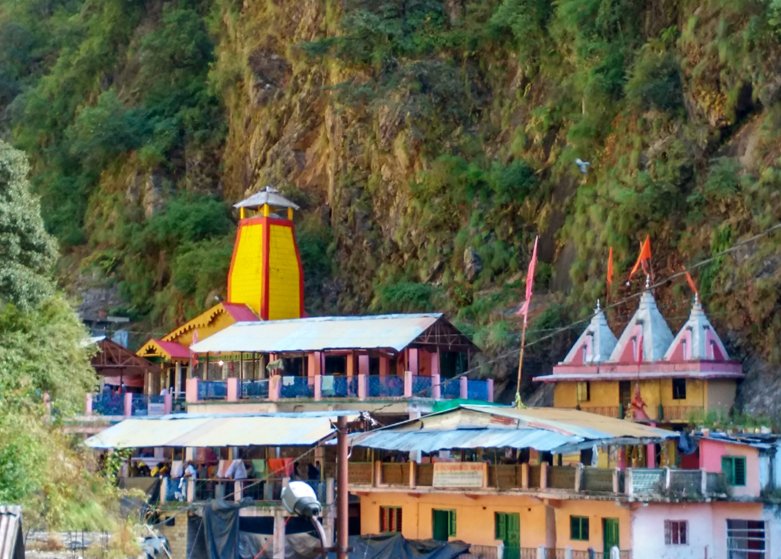
- This is the source of the Yamuna River and is dedicated to the goddess Yamuna. Pilgrims visit the Yamunotri temple to offer prayers and seek blessings. The legend of Yamunotri is deeply rooted in Hindu mythology and is associated with the goddess Yamuna, who is considered the deity of the Yamuna River.
- The Birth of Yamuna: According to Hindu mythology, Yamuna is believed to be the daughter of Surya, the sun god, and Saranyu, the goddess of clouds. She was born to them and descended from the heavens to the Earth to bless humanity with her sacred waters.
- Yamuna’s Austerity: In her earthly form, Yamuna decided to perform rigorous penance and tapasya (austerity) to please Lord Shiva. Her intention was to attain a permanent place in the hearts of the people and become a revered river. She chose the remote and picturesque region now known as Yamunotri in the Himalayas for her meditation.
- Lord Shiva’s Blessing: Impressed by Yamuna’s devotion and determination, Lord Shiva agreed to her request. He blessed her and granted her a divine status. He also agreed to be present in the region as the sacred lingam (a symbolic representation of Lord Shiva) known as the Yamunotri Dham. The temple at Yamunotri is dedicated to Goddess Yamuna and houses the sacred thermal spring that is considered the origin of the Yamuna River.
- Yamuna’s Descent: After receiving Lord Shiva’s blessing, Yamuna’s waters started flowing from the Yamunotri Dham. This pristine and holy river eventually merges with the Ganges (Ganga) River at a confluence known as Triveni Sangam in Allahabad (now Prayagraj).
- Religious Significance: The Yamunotri temple, built near the sacred thermal spring, is an essential pilgrimage site for Hindus. Pilgrims visit the temple to offer prayers and take a ritualistic dip in the hot waters of the Yamuna River, which is believed to cleanse them of their sins. The waters of the Yamuna River are considered purifying and hold great spiritual significance.
- The Yamunotri temple and the Yamuna River continue to be an integral part of the Char Dham Yatra, attracting devotees and tourists alike who seek spiritual solace in the serene and picturesque surroundings of the Yamunotri region. The legend of Yamunotri serves as a testament to the importance of the Yamuna River in Hindu mythology and its role in the religious and cultural fabric of India.
Gangotri
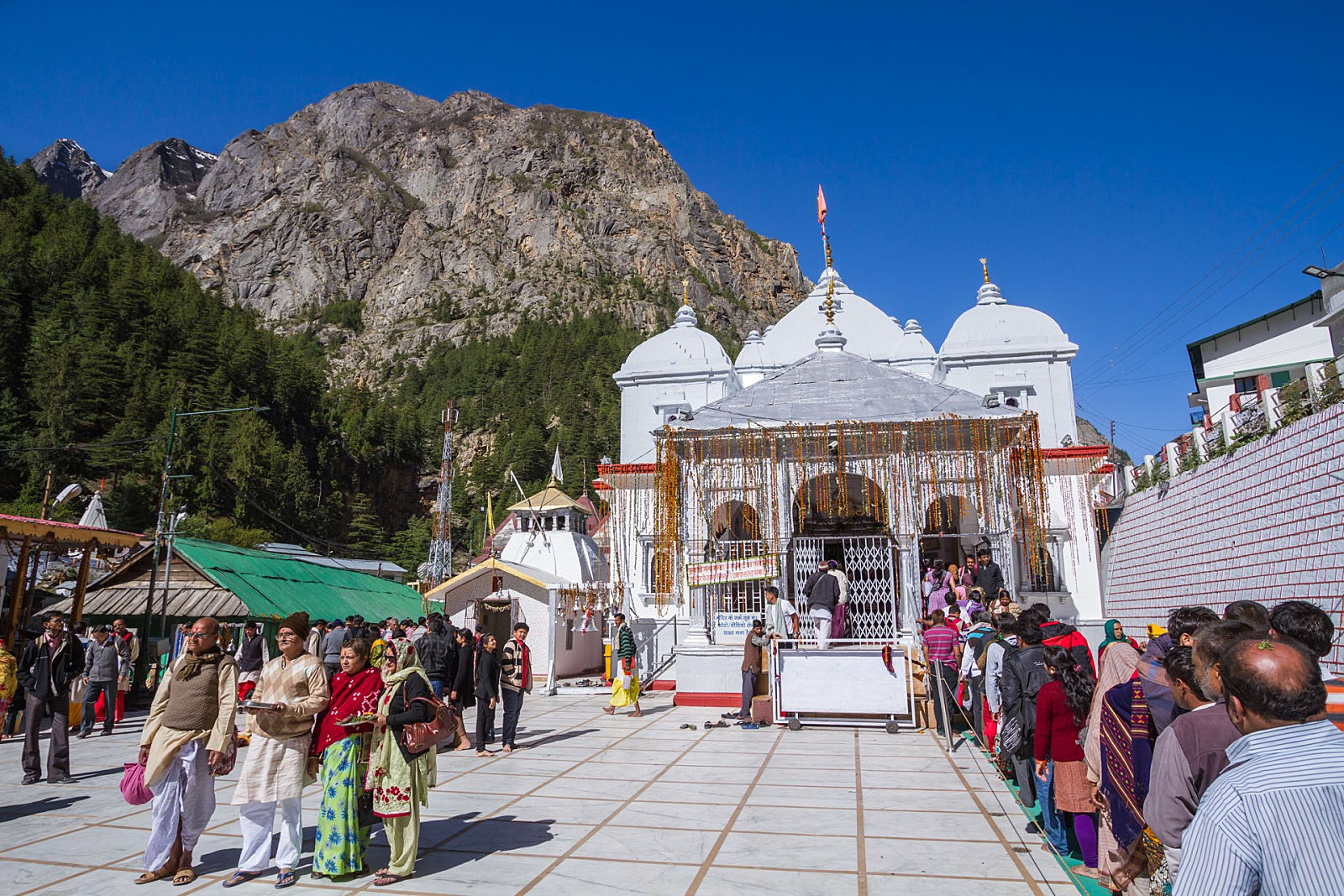
- Gangotri is the source of the holy Ganges River and is dedicated to Goddess Ganga. Devotees visit the Gangotri temple to take a holy dip in the Ganges and perform rituals. The legend of Gangotri is a significant part of Hindu mythology and is closely associated with the origin of the holy Ganges River (Ganga).
- King Bhagiratha’s Penance: The story begins with King Bhagiratha, a noble and virtuous ruler of ancient India. He was determined to bring the sacred river Ganga down to Earth to purify the souls of his ancestors who had perished due to a sage’s curse. The ancestors could only attain salvation if their ashes were immersed in the holy waters of the Ganges.
- Sage Kapila’s Curse: In ancient times, a great sage named Kapila had been meditating in the Himalayas. King Sagara, a forefather of Bhagiratha, had performed an Ashwamedha Yagna (a horse sacrifice) near the sage’s hermitage. The horse, sent by King Sagara, had wandered into the sage’s meditation area, disrupting his penance. Annoyed by the intrusion, Kapila sage burned the 60,000 sons of King Sagara to ashes with his divine gaze.
- Bhagiratha’s Determination: King Bhagiratha, upon learning of the tragedy, vowed to bring the Ganges to Earth to cleanse the ashes of his ancestors and help them attain moksha (salvation). He engaged in severe penance, meditating for thousands of years in the Himalayas. His unwavering devotion and austerities pleased Lord Brahma, the creator of the universe.
- Ganga’s Descent: In response to Bhagiratha’s penance, Lord Brahma granted his request. However, he warned Bhagiratha that the force of Ganga’s descent from the heavens could devastate the Earth. To prevent this, Lord Shiva agreed to bear the force of Ganga’s fall by catching her in his matted hair and slowly releasing her through the locks.
- Ganga’s Arrival at Gangotri: Ganga descended from the heavens and landed on the head of Lord Shiva at a location in the Himalayas, which is now known as Gangotri. From there, she flowed gently and gracefully onto the Earth, following Bhagiratha’s path.
- Gangotri Temple: The Gangotri temple, dedicated to Goddess Ganga, is built at the spot where Ganga is believed to have touched the Earth. The temple, perched in the Garhwal Himalayas of Uttarakhand, is a sacred pilgrimage site for Hindus.
- Significance: Gangotri is considered one of the Char Dham pilgrimage sites in India. Pilgrims visit the temple to offer prayers, take a holy dip in the ice-cold waters of the Bhagirathi River (the upper course of the Ganges), and seek blessings. The legend of Gangotri symbolizes the significance of the Ganges River in Hindu spirituality and the belief that its waters have the power to purify and liberate the soul.
Kedarnath
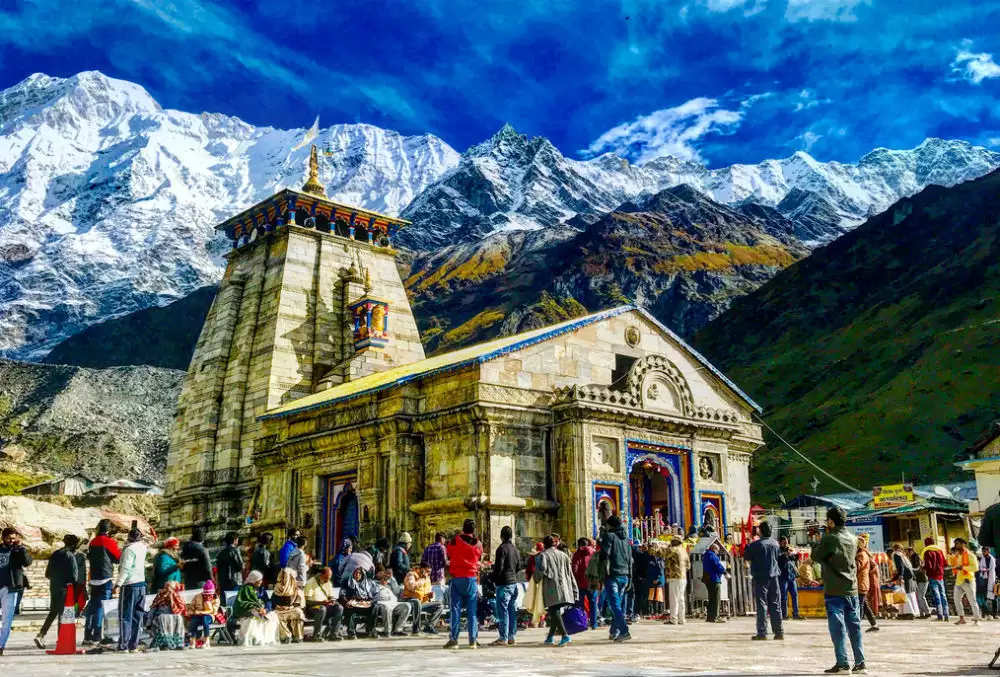
- Kedarnath is dedicated to Lord Shiva and is one of the twelve Jyotirlingas (divine manifestations of Lord Shiva). It is situated amidst the breathtaking Kedarnath range of the Himalayas. The legend of Kedarnath is deeply rooted in Hindu mythology and is associated with Lord Shiva, one of the principal deities of Hinduism. Kedarnath is one of the most revered pilgrimage sites in India and holds great religious significance.
- The Legend of Kedarnath Jyotirlinga:According to Hindu mythology, Kedarnath is one of the twelve sacred Jyotirlingas (divine manifestations of Lord Shiva).
- King Pandu’s Penance: Long ago, in the Himalayan region, King Pandu of the Pandava dynasty from the Mahabharata epic decided to retire to the mountains and meditate to seek salvation. Along with his queen, Kunti, and other Pandava brothers, they embarked on a journey to the sacred Himalayas.
- Meeting Lord Shiva: While meditating, King Pandu encountered Lord Shiva, who was in the form of a bull (Nandi). Not recognizing Lord Shiva, King Pandu attempted to capture the bull. However, Lord Shiva eluded him and took refuge in the ground, disappearing entirely.
- Lord Shiva’s Revelation: Realizing the divine presence, King Pandu began to pray fervently to Lord Shiva, seeking forgiveness for his actions and requesting that Lord Shiva reveal himself. Pleased with King Pandu’s devotion, Lord Shiva manifested in a unique form as a hump-backed lingam (a symbolic representation of Lord Shiva) at Kedarnath.
- Kedarnath Jyotirlinga: This hump-backed lingam came to be known as the Kedarnath Jyotirlinga and is believed to be a self-manifested form of Lord Shiva. It is considered one of the holiest shrines in Hinduism and is believed to grant spiritual liberation (moksha) to devotees who worship it with devotion and sincerity.
- The Present-Day Temple: The present-day Kedarnath temple, which houses the Kedarnath Jyotirlinga, is believed to have been originally constructed by the Pandavas. The temple was later renovated and expanded by various kings and devotees over the centuries. It is located in the Garhwal region of Uttarakhand, at an altitude of about 3,583 meters (11,755 feet) in the majestic Himalayan mountains.
- Kedarnath continues to be an essential pilgrimage site for Hindus, attracting devotees and tourists alike who come to seek the blessings of Lord Shiva and witness the breathtaking natural beauty of the Himalayas. The legend of Kedarnath reinforces the belief in the divine presence of Lord Shiva and the significance of this sacred Jyotirlinga in the religious and cultural fabric of India.
Badrinath
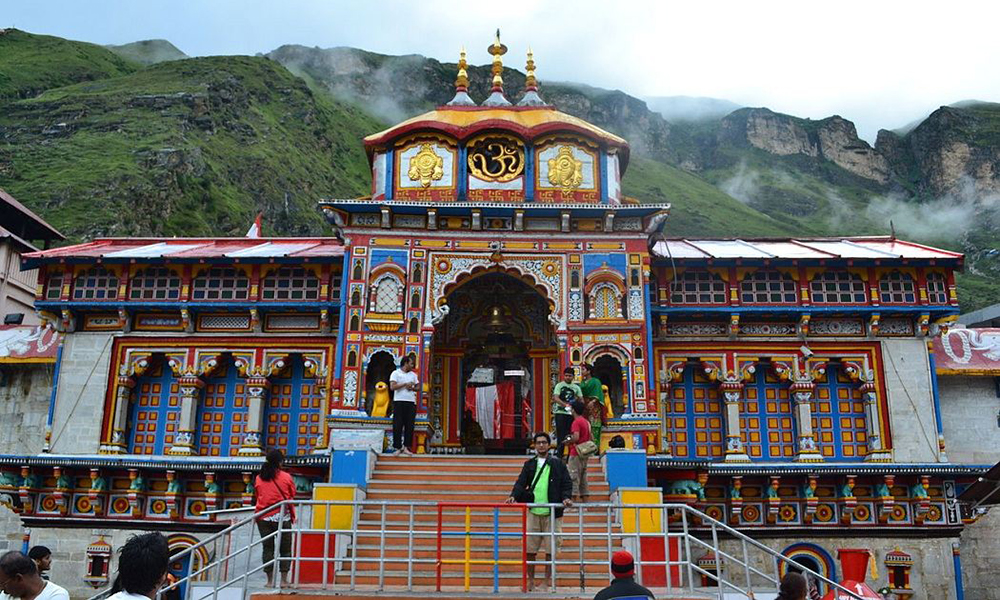
- Badrinath is dedicated to Lord Vishnu and is considered one of the Char Dhams. It is located in the town of Badrinath and is an essential pilgrimage site for Vaishnavite Hindus. The legend of Badrinath is associated with Lord Vishnu and the establishment of the sacred Badrinath temple in the Himalayan region of Uttarakhand, India.
- The Tapasya (Austerity) of Lord Vishnu: According to Hindu mythology, in ancient times, Lord Vishnu, one of the principal deities of Hinduism, took on a human form as the sage Narada Muni. During his travels, Narada Muni encountered a divine fragrance emanating from the mountains in the region of Badrinath.
- The Discovery of the Deity: Intrigued by the fragrance, Narada Muni followed its source and reached the banks of the Alaknanda River. There, he discovered a sacred Saligram stone (a unique black fossil stone considered an embodiment of Lord Vishnu) immersed in the river. Recognizing the stone as an idol of Lord Vishnu, he decided to establish a temple dedicated to the deity.
- Lord Vishnu’s Meditation: Narada Muni, with the help of other divine beings, constructed a small temple in the area. He then entered into deep meditation to invoke Lord Vishnu to reside in the sacred idol. Pleased by Narada’s devotion and penance, Lord Vishnu agreed to reside in the idol, and the deity became known as Badrinarayan.
- The Name Badrinath: The word “Badrinath” is derived from two Sanskrit words: “Badri,” which refers to the Badri tree (Indian Jujube) and “Nath,” which means “Lord” or “Master.” The temple was thus named “Badrinath” after the Badri tree that surrounded the area.
- The Charming Appearance of Lord Vishnu: In the idol at the Badrinath temple, Lord Vishnu is depicted as a charming and meditative deity, sitting in a yogic posture known as padmasana. He is adorned with various divine ornaments and is seen holding a conch (shankha) and a discus (chakra), which are symbols of his divine power.
- Badrinath Temple: The Badrinath temple is one of the four sacred shrines included in the Char Dham Yatra, and it is dedicated to Lord Vishnu. It is situated at an elevation of approximately 3,100 meters (10,170 feet) in the Garhwal Himalayas. The temple, with its stunning architecture and serene surroundings, attracts thousands of pilgrims and tourists each year.
- The legend of Badrinath showcases the significance of this sacred pilgrimage site and the belief that Lord Vishnu resides there to bless devotees and seekers of spiritual enlightenment. It remains a revered destination for Hindus seeking the divine grace of Lord Badrinath.
Route followed by Char Dham Yatra

The Char Dham Yatra typically begins in the west with a visit to Yamunotri and Gangotri, followed by Kedarnath and Badrinath. Pilgrims believe that completing this circuit and taking a dip in the sacred rivers at these sites can cleanse them of sins and lead to spiritual salvation.
Best time for Char Dham Yatra
The best time for the Char Dham Yatra in India depends on the weather conditions and the preferences of the pilgrims. The Char Dham Yatra typically covers four sacred pilgrimage sites in the Indian state of Uttarakhand: Yamunotri, Gangotri, Kedarnath, and Badrinath. Here are the primary seasons for the Char Dham Yatra:
- Late April to Early June (Spring and Early Summer):This period marks the start of the pilgrimage season.The weather is generally pleasant, with temperatures ranging from 10°C to 20°C (50°F to 68°F) during the day.The snow from the previous winter is melting, and the landscapes are lush and green.Pilgrims can comfortably visit Yamunotri and Gangotri during this time.
- June to September (Monsoon Season):This period experiences heavy monsoon rains, especially in July and August.Landslides and road closures are common due to rain-induced damage.Pilgrimage during this time can be challenging and risky, and it’s not recommended.
- Late September to Early November (Autumn):This is a popular time for the Char Dham Yatra.The weather is cool and pleasant, with daytime temperatures ranging from 10°C to 15°C (50°F to 59°F).The monsoon rains have subsided, reducing the risk of landslides.Pilgrims can visit Kedarnath and Badrinath during this season.
- Mid-November to April (Winter):The Char Dham temples are usually closed to the public during the winter due to heavy snowfall and extreme cold.The region experiences sub-zero temperatures, making it inhospitable for pilgrims.The temples generally reopen in late April or early May after the winter snow clears.
The ideal time for the Char Dham Yatra is typically late April to early June and late September to early November when the weather is conducive, and the pilgrimage sites are accessible.
Significance of Char Dham Yatra
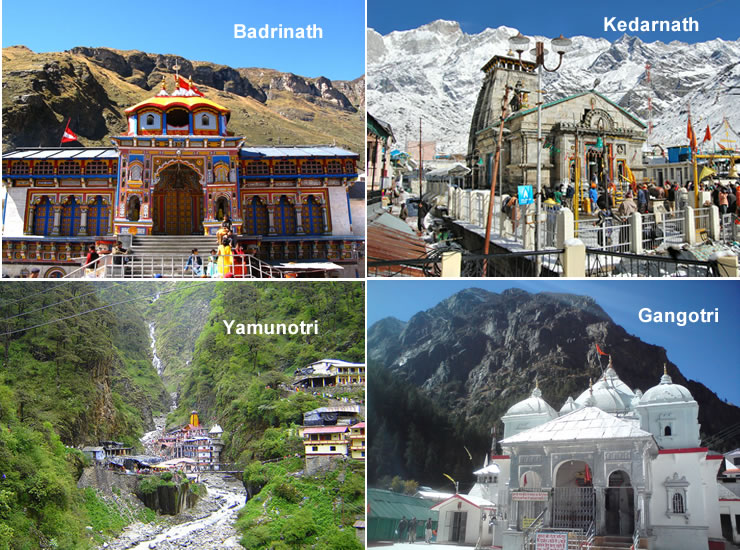
The Char Dham Yatra in India holds immense spiritual and religious significance for Hindus. It is believed to cleanse devotees of their sins and provide a path to spiritual salvation. Visiting the four sacred shrines of Yamunotri, Gangotri, Kedarnath, and Badrinath is thought to be a sacred journey that allows pilgrims to seek blessings from the deities, immerse themselves in the divine aura of the Himalayas, and strengthen their connection with the eternal forces of nature. The Yatra also showcases the natural beauty and serenity of the Himalayan region, making it a unique blend of spirituality, adventure, and cultural experience for those who undertake this revered pilgrimage.
Popular Char Dham Yatra Tour Itinerary
A popular Char Dham Yatra tour itinerary typically covers the four sacred pilgrimage sites of Yamunotri, Gangotri, Kedarnath, and Badrinath in the state of Uttarakhand, India. Here’s a sample itinerary:
Day 1: Arrival in Delhi or Haridwar
- Arrive in Delhi or Haridwar, depending on your chosen starting point.
- Overnight stay in a hotel or guesthouse.
Day 2: Delhi/Haridwar to Yamunotri
- Depart for the first leg of the journey to Yamunotri.
- Reach Hanuman Chatti or Phool Chatti, the base camps for Yamunotri.
- Trek or take a pony ride to Yamunotri temple.
- Offer prayers and visit the hot springs (Yamunotri Kund).
- Return to the base camp and stay overnight.
Day 3: Yamunotri to Gangotri
- Depart for Gangotri, the second destination.
- En route, visit Uttarkashi and explore the town.
- Reach Gangotri and visit the Gangotri temple.
- Attend the evening aarti (prayer ceremony) at the temple.
- Stay overnight in Gangotri.
Day 4: Gangotri to Uttarkashi
- Depart for Uttarkashi, the base for the next leg of the journey.
- Explore Uttarkashi and visit the Kashi Vishwanath temple.
- Stay overnight in Uttarkashi.
Day 5: Uttarkashi to Kedarnath (via Guptkashi)
- Travel to Guptkashi, a town near Kedarnath.
- Visit the ancient Ardhanarishvara temple in Guptkashi.
- Continue the journey to Gaurikund, the base for Kedarnath.
- Trek or take a helicopter ride to Kedarnath.
- Visit the Kedarnath temple and offer prayers.
- Stay overnight in Kedarnath or at nearby accommodations.
Day 6: Kedarnath to Rudraprayag
- Trek back to Gaurikund and proceed to Rudraprayag.
- Visit Rudraprayag’s confluence of the Alaknanda and Mandakini rivers.
- Stay overnight in Rudraprayag.
Day 7: Rudraprayag to Badrinath
- Depart for Badrinath, the final destination of the Char Dham Yatra.
- Visit Karnaprayag en route.
- Reach Badrinath, check into your accommodation, and freshen up.
- Visit the Badrinath temple and take a holy dip in the Tapt Kund.
- Attend the evening aarti at the temple.
- Stay overnight in Badrinath.
Day 8: Badrinath to Joshimath
- Visit the Mana village, near Badrinath, known for its spiritual significance.
- Explore Vyas Gufa and the Bhim Pul.
- Travel to Joshimath and check in at the hotel.
- Stay overnight in Joshimath.
Day 9: Joshimath to Rishikesh/Haridwar
- Depart from Joshimath and return to either Rishikesh or Haridwar.
- Rest and explore the towns.
- Stay overnight in Rishikesh or Haridwar.
Day 10: Departure
- Depart from Rishikesh or Haridwar for your onward journey or return to Delhi.
This itinerary is just a sample, and the actual schedule can vary based on factors like transportation availability and weather conditions. It’s advisable to plan your Char Dham Yatra well in advance, check the current conditions, and make any necessary accommodations and travel arrangements accordingly.
Optional Add Ons
If you have 3-4 more days to spare after completing the Char Dham Yatra, you can include additional destinations in Uttarakhand or explore nearby attractions. Here are some suggestions for places you can include in your extended tour:
- Valley of Flowers: This UNESCO World Heritage Site is known for its stunning alpine meadows and a wide variety of colorful flowers. It’s a trekking destination and offers breathtaking views of the Himalayan peaks. Valley of Flowers is accessible from Govindghat, which is also a starting point for the Hemkund Sahib Yatra.
- Hemkund Sahib: Hemkund Sahib is a revered Sikh pilgrimage site located near the Valley of Flowers. The trek to Hemkund Sahib takes you to a high-altitude gurudwara situated beside a pristine lake. It’s a place of great religious significance for Sikhs.
Char Dham Yatra by Helicopter Tour Plan
A Char Dham Yatra by helicopter is a convenient and time-saving option for those who wish to visit the four sacred shrines (Yamunotri, Gangotri, Kedarnath, and Badrinath) in Uttarakhand. Here is a sample Char Dham Yatra by helicopter tour plan:
Day 1: Arrival in Dehradun
- Arrive in Dehradun, where your Char Dham Yatra by helicopter will begin.
- Check into your hotel and have an orientation meeting with your tour operator to go over the itinerary and safety instructions.
Day 2: Dehradun to Yamunotri
- Early morning departure from the helipad in Dehradun to Yamunotri.
- Visit the Yamunotri temple and the Surya Kund.
- Return to your hotel for an overnight stay.
Day 3: Yamunotri to Gangotri
- Fly to Gangotri in the morning.
- Visit the Gangotri temple and take a dip in the holy Ganges.
- Return to your hotel for an overnight stay in Gangotri.
Day 4: Gangotri to Kedarnath
- Early morning departure to Kedarnath.
- Visit the Kedarnath temple and spend the night in Kedarnath.
Day 5: Kedarnath to Badrinath
- Fly to Badrinath in the morning.
- Visit the Badrinath temple and take a dip in the Tapt Kund.
- Return to your hotel for an overnight stay in Badrinath.
Day 6: Badrinath to Dehradun
- Fly back to Dehradun.
- Check into your hotel and have the rest of the day at leisure.
Day 7: Departure
- Check out from your hotel and depart for your onward journey.
Please note that this is a sample Char Dham Yatra by Helicopter Tour itinerary, and the actual tour plan may vary depending on the tour operator, flight schedules, and weather conditions. Helicopter tours offer the advantage of saving time and providing a comfortable travel experience, but they are subject to weather-related delays or changes.
Pros and Cons of Char Dham Yatra by Bus vs Car vs Helicopter
Char Dham Yatra by Bus:
Pros:
- Cost-Effective: Bus travel is usually the most budget-friendly option for Char Dham Yatra.
- Scenic Journey: Allows you to enjoy the picturesque landscapes of the Himalayas and the journey through charming hill stations.
- Group Experience: Provides an opportunity to connect with fellow pilgrims and share the spiritual journey.
Cons:
- Time-Consuming: Bus journeys can be long and tiring, extending the duration of the pilgrimage.
- Road Conditions: Some stretches of the route may have challenging road conditions, including narrow and winding roads.
- Crowded: Buses can get crowded during peak pilgrimage seasons, leading to discomfort.
Char Dham Yatra by Car:
Pros:
- Flexibility: Allows you to customize your itinerary and make stops along the way.
- Comfort: Provides a more comfortable and private travel experience compared to buses.
- Convenience: Can be more convenient for families or small groups.
Cons:
- Driving Challenges: Navigating steep and winding roads in the Himalayas can be challenging, especially for inexperienced drivers.
- Road Conditions: Some sections of the route may be narrow and in poor condition.
- Parking Issues: Finding parking at pilgrimage sites and towns can be challenging during peak seasons.
Char Dham Yatra by Helicopter:
Pros:
- Time-Saving: Helicopter tours significantly reduce travel time, allowing you to complete the pilgrimage quickly.
- Convenience: Offers a comfortable and hassle-free journey with no need for long road travel.
- Access to Remote Areas: Helicopters can reach remote and high-altitude shrines with ease.
Cons:
- Costly: Helicopter tours are the most expensive option for Char Dham Yatra.
- Weather-Dependent: Flights can be affected by adverse weather conditions, causing delays or cancellations.
- Limited Baggage: Helicopters often have strict baggage weight limits, so you must pack light.
Ultimately, the choice of transportation for Char Dham Yatra depends on your budget, time constraints, comfort preferences, and tolerance for long road journeys.
Why hire a tour operator?
Tour operators provide a range of invaluable benefits to travelers, simplifying the complexities of trip planning and enhancing the overall experience. They offer expert knowledge of destinations, crafting well-designed itineraries that optimize sightseeing, activities, and local insights. With access to local guides and resources, tour operators ensure authentic experiences and smoother logistics, from transportation to accommodations. Their established networks often lead to exclusive access, better rates, and hassle-free arrangements. This allows travelers to focus on enjoying their journey, knowing that the intricate details are efficiently managed by professionals who prioritize safety, comfort, and memorable moments.
Top 10 Char Dham Yatra Tour Operators in Delhi, India
IndusTrips
Indus Trips is a premier travel company offering curated group tours across India, including cultural, spiritual, wellness, culinary, wildlife, and photography experiences. They cater to families, solo travelers, women, seniors, and corporate groups with personalized itineraries and seamless travel support. Website: https://industrips.com/
Frontiers Beyond Tours
Frontiers Beyond Tours is a Delhi based luxury travel company dedicated to crafting immersive, offbeat journeys across India and beyond — from wild tiger safaris to cultural deep-dives, adventure road-trips, and cinematic-style expeditions. Frontiers Beyond blends authentic local experiences, wildlife encounters, and dramatic landscapes with expert planning, sustainable tourism, and a passion for narrative. Whether you’re seeking adventure, culture, wildlife, or documentary-class filming support, Frontiers Beyond delivers bespoke trips that transform travel into unforgettable stories.
Website: https://www.frontiersbeyond.com/
Indian Holiday Pvt. Ltd.
Indian Holiday Pvt. Ltd. is a leading travel agency with extensive experience in organizing Char Dham Yatra tours.
They offer a range of Char Dham Yatra packages, including helicopter tours, customized itineraries, and group tours.
Website: http://www.indianholiday.com
Tour My India Pvt. Ltd.
Tour My India is a reputable travel company known for its expertise in Char Dham Yatra planning.
They provide diverse Char Dham Yatra packages, including options for different durations and modes of transportation.
Website: http://www.tourmyindia.com
Divine Char Dham
Divine Char Dham specializes in creating spiritually enriching Char Dham Yatra experiences.
They focus on organizing pilgrimages to the Char Dham shrines with an emphasis on spiritual significance.
Website: http://www.divinechardhamyatra.com
Chardham Yatra India
Chardham Yatra India is dedicated to facilitating pilgrimages to the Char Dham destinations.
They offer comprehensive Char Dham Yatra packages to cater to the needs of pilgrims.
Website: http://www.chardhamyatra.org
Echardham Yatra
Echardham Yatra specializes in Char Dham Yatra packages, including helicopter tours for a convenient pilgrimage.
They provide various Char Dham Yatra itineraries to accommodate different preferences.
Website: http://www.echardhamyatra.com
India Pilgrim Tours
India Pilgrim Tours specializes in organizing spiritual journeys, including Char Dham Yatra.
They offer a variety of Char Dham Yatra packages with customization options to meet specific requirements.
Website: http://www.indiapilgrimtours.com
SOTC Travel Services Pvt. Ltd.
SOTC is a well-established travel agency known for its diverse travel services, including Char Dham Yatra.
They provide Char Dham Yatra packages tailored to different budgets and preferences.
Website: http://www.sotc.in
Chardham Tour Packages
Chardham Tour Packages specializes in pilgrimage tours to the Char Dham temples.
They offer comprehensive Char Dham Yatra packages, ensuring a seamless pilgrimage experience.
Website: http://www.chardhamtourpackages.com
Chardham Packages
Chardham Packages is dedicated to organizing pilgrimages to the Char Dham shrines.
They provide a range of Char Dham Yatra packages suitable for various budgets and preferences.
Website: http://www.chardhampackages.com
Max Holidays India Pvt. Ltd.
Max Holidays is a prominent travel agency offering Char Dham Yatra packages and other tour services.
They provide Char Dham Yatra packages, including group tours and personalized itineraries.
Website: http://www.maxholidays.com
FAQs – Char Dham Tours
Q: What is the Char Dham Yatra in India?
A: The Char Dham Yatra is a sacred pilgrimage in India that includes four revered shrines: Yamunotri, Gangotri, Kedarnath, and Badrinath, located in the Himalayan region of Uttarakhand. It is believed to cleanse pilgrims of their sins and offer spiritual enlightenment.
Q: When is the best time to undertake the Char Dham Yatra?
A: The best time for the Char Dham Yatra is typically late April to early June and late September to early November. These months offer pleasant weather and accessibility to the shrines.
Q: What is the duration of the Char Dham Yatra?
A: The duration of the Char Dham Yatra varies depending on the mode of transportation and itinerary. By road, it typically takes around 10-12 days. Helicopter tours offer shorter durations.
Q: How do I obtain permits for the Char Dham Yatra?
A: Permits and passes for the Char Dham Yatra can be obtained through registered tour operators or at designated checkpoints. They may include photo identification and medical certificates.
Q: What should I pack for the Char Dham Yatra?
A: Pack warm clothing, comfortable trekking gear, rain gear, personal medications, ID proof, and necessary documents. Follow the guidelines provided by your tour operator.
Q: Is the Char Dham Yatra suitable for elderly or physically challenged individuals?
A: While it can be physically demanding due to trekking and high altitudes, helicopter tours and ponies/dolis are available to assist those with mobility challenges. Consult a doctor before embarking on the Yatra.
Q: What are the accommodation options during the Char Dham Yatra?
A: Accommodation options include hotels, guesthouses, and dharamshalas (pilgrim shelters). Book accommodations in advance, especially during peak pilgrimage season.
Q: Is there mobile network coverage during the Yatra?
A: Mobile network coverage is available in many parts of the Char Dham Yatra route, but it may be limited or unavailable in remote areas. It’s advisable to inform your family about your travel plans in advance.
Q: Are there medical facilities and emergency services along the route?
A: Medical facilities and emergency services are available at various points along the route. Carry essential medicines, and inform your tour guide or fellow pilgrims about any medical conditions.
Q: Can I undertake the Char Dham Yatra independently or should I book through a tour operator?
A: While independent travel is possible, many pilgrims choose to book through registered tour operators who provide transportation, accommodations, permits, and local guides, ensuring a smoother pilgrimage experience.
#chardham #chardhamtour #chardhamtouroperators #chardhamtoursfromdelhi #yamunotri #gangotri #badrinath #kedarnath
